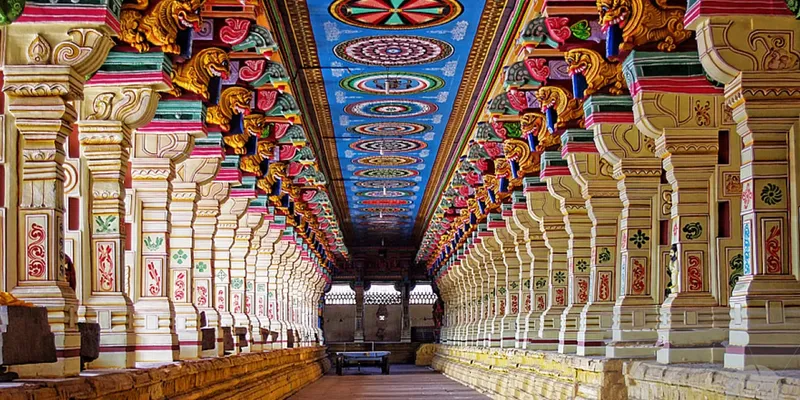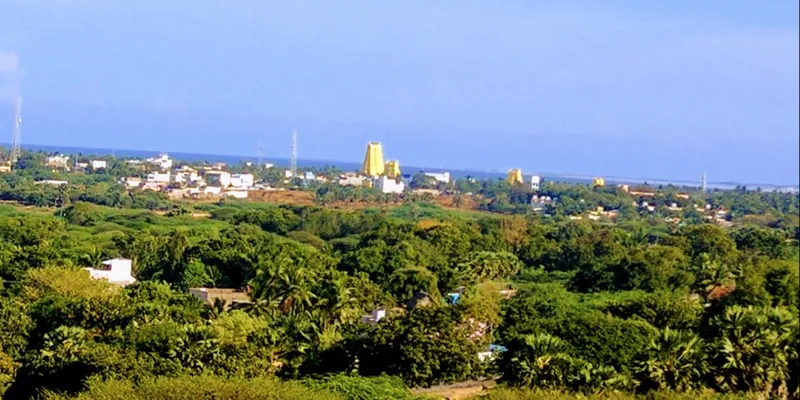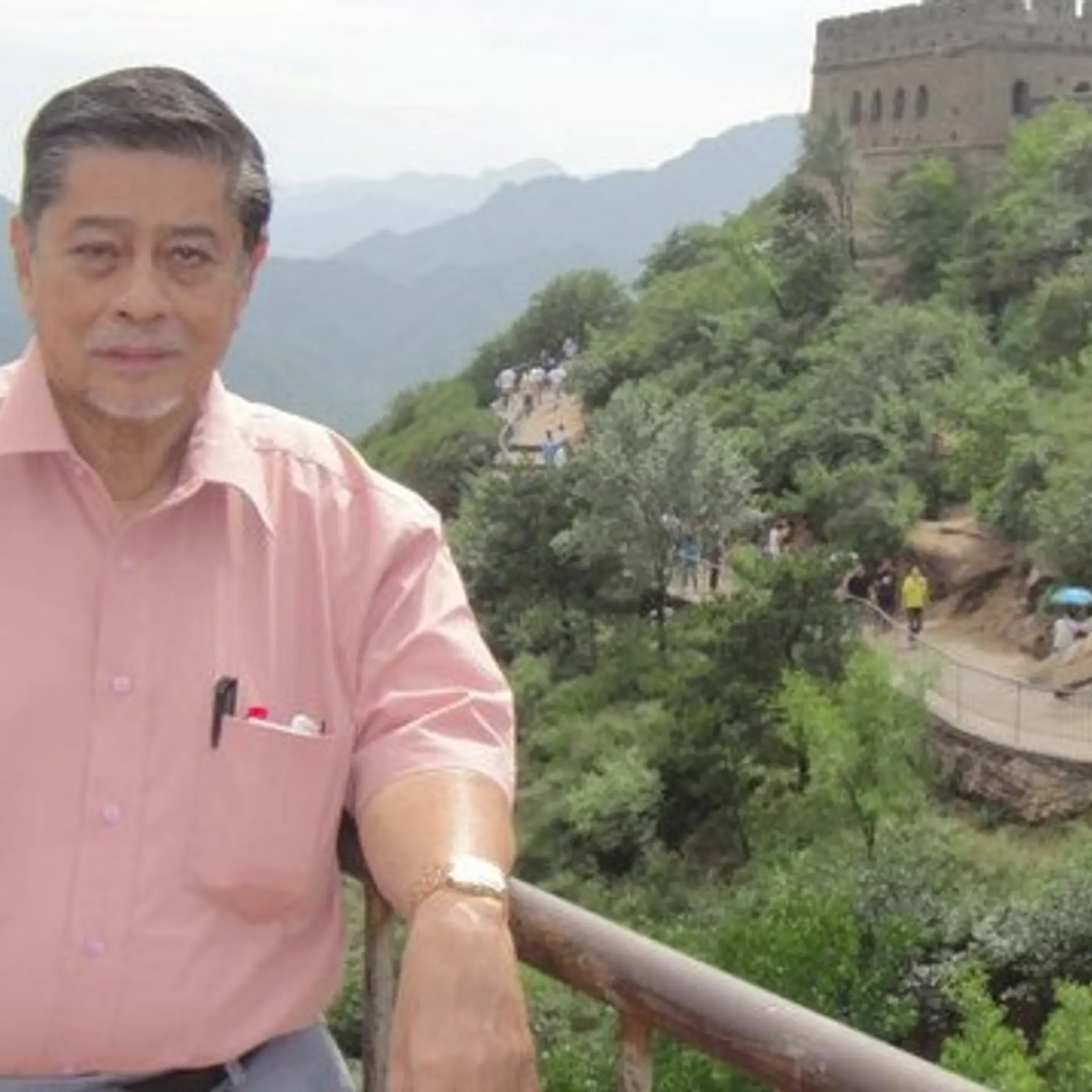

South India pilgrimage tour - Day 3 - Rameswaram
It was 5am and the train had pulled into Rameswaram station. Post check-in; we soon left to take a dip in the holy waters of Agnitheertham Sea. This beach has no waves at all. It is recommended to take a dip in the holy waters of this sea, prior to entering the Ramanathaswamy temple’s premises.
Rameswaram is geographically located at the tip of the Indian peninsula on Pamban Island, which is connected to mainland India by the Pamban Bridge. It is about 50 kilometres from Sri Lanka. It is part of the ‘Char Dham’ pilgrimage comprising Badrinath, Puri and Dwarka. The Hindus aspire to visit these temples once in their lifetime and consider the journey across these four holy shrines sacred.
“Rameswara” means "Lord Rama”, an incarnation of Vishnu. It is said that this is the place from where Lord Rama built a floating stone bridge, the ‘Ramsetu’ bridge across the sea to Lanka to rescue his wife Sita, who was held captive by Ravana.
Ramanathaswamy Temple
According to the Hindu scriptures, upon the advice of sages it was here that Lord Rama along with his wife Sita and his brother Lakshmana worshipped the Shiva lingam (an iconic symbol of Shiva) to forgive the sin of Brahmahatya incurred by killing the demon-king Ravana. The mythological story states that to worship Shiva, Lord Rama needed a Lingam. He directed his devotee Hanuman to bring it from Kailash. It took a long time for Hanuman to bring the lingam and the auspicious hour to perform the puja was ticking by; Sita built a lingam from the sands of the seashore. Hanuman too brought a Lingam from Kailash. Hence, there are two lingams inside the sanctum of the Ramanathaswamy temple – one built by Sita resides as the main deity, Ramalingam and the one brought by Hanuman, called Vishwalingam. Rama instructed that the Vishwalingam should be worshipped prior to Ramalingam, since his devotee Hanuman brought it - the tradition continues even today.
The Ramanathaswamy Temple is the most notable historic landmark of the town. It has the longest corridor among all Hindu temples in India. It is one of the 12 Jyotirlinga shrines, where Shiva is worshipped in the form of a Jyotirlinga meaning "pillar of light”.

Ramanathaswamy Temple
There are Twenty-two holy water bodies within the Ramanathaswamy Temple. Post a dip in the holy sea of Agnitheertham; pilgrims bathe with a bucket of water at each of these 22 shrines before entering the holy sanctum.
It is advisable to carry a pair of extra clothes to change over and then head to the sanctum to perform the puja. There are designated places within the temple premises to change clothes.
Post visiting the temple, we treated ourselves to another good south Indian meal and went back to our guesthouse for an afternoon nap.
Gandamadana Parvatham

View atop the Gandamadana Parvatham
Remember the hill in Ramayana, that Hanuman carries on his shoulders to procure the sanjeevani herbs to cure Lakshmana? Yes, it is the Gandamadana Parvatham.
This is the highest point in Rameswaram and offers a bird’s eye view of the entire island. The view atop this island is picturesque. Ramjharoka temple built on this island houses the imprint of Lord Rama’s feet placed on a chakra. The ancient tales state that it was at this spot that Lord Rama rested and looked at the vast ocean that lay between Lanka and him, to gauge the time it would take him to reach Lanka. It was thrilling to be standing on that same very hill ☺
Dhanushkodi

Beach at Dhanushkodi
A visit to Dhanushkodi, around 20 kilometres away from Rameswaram and 31 kilometres from Sri Lanka, is a visual treat to the eyes. The beautiful view of the clear blue sea takes your breath away.
Lore has it that when Rama’s army had to cross over to Lanka, he built a floating stone bridge over the ocean. After the war with Ravana, he broke it with the end of his bow. That is how this place got its name – ‘Dhanush’ means bow and ‘ Kodi’ means end of the arrow.
Dhanushkodi was a flourishing town until 1964, when a cyclone of unprecedented scale engulfed the entire town. Following the disaster, the Government of Madras declared it ‘a ghost town’ – unfit for living.
Kothandaramaswamy Temple
On the way from Rameswaram to Dhanushkodi is the Kothandaramaswamy temple, where forklore states that Vibhishan, the younger brother of Ravana, asked Rama for refuge. It is also said that after killing Ravan, Rama performed the “Pattabhishekam” (crowning the King of Lanka) for Vibhishan at this place. This is the only structure that survived when Dhanushkodi was severely affected by the 1964 cyclone.
Panchamukhi Hanuman Temple
The Five faced Hanuman Temple (or Panchmukhi Hanuman Temple) is a unique destination especially for Hanuman devotees. It is located at a distance of about 2 km from Rameshwaram Temple and has an idol of Hanuman fully covered in vermillion. It has a floating stone in a water tank kept outside the temple. It is believed that it is the same stone used for making the bridge across the sea to Lanka. It was a nice experience to see and touch one of the floating stones.
Legend has it that a pilgrimage to Kasi/Varanasi/Benaras is incomplete without praying at Rameswaram. This city is truly a temple town with many attractions for pilgrims.
Coming up next is my trip to Madurai and Trichy. So stay around ☺







